Orthodontic treatment for prominent lower front teeth (Class III malocclusion) in children
- PMID: 38597341
- PMCID: PMC11005087
- DOI: 10.1002/14651858.CD003451.pub3
Orthodontic treatment for prominent lower front teeth (Class III malocclusion) in children
Abstract
Background: Prominent lower front teeth (Class III malocclusion) may be due to jaw or tooth position or both. The upper jaw (maxilla) can be too far back or the lower jaw (mandible) too far forward; the upper front teeth (incisors) may be tipped back or the lower front teeth tipped forwards. Orthodontic treatment uses different types of braces (appliances) fitted inside or outside the mouth (or both) and fixed to the teeth. A facemask is the most commonly reported non-surgical intervention used to correct Class III malocclusion. The facemask rests on the forehead and chin, and is connected to the upper teeth via an expansion appliance (known as 'rapid maxillary expansion' (RME)). Using elastic bands placed by the wearer, a force is applied to the top teeth and jaw to pull them forwards and downward. Some orthodontic interventions involve a surgical component; these go through the gum into the bone (e.g. miniplates). In severe cases, or if orthodontic treatment is unsuccessful, people may need jaw (orthognathic) surgery as adults. This review updates one published in 2013.
Objectives: To assess the effects of orthodontic treatment for prominent lower front teeth in children and adolescents.
Search methods: An information specialist searched four bibliographic databases and two trial registries up to 16 January 2023. Review authors screened reference lists.
Selection criteria: We looked for randomised controlled trials (RCTs) involving children and adolescents (16 years of age or under) randomised to receive orthodontic treatment to correct prominent lower front teeth (Class III malocclusion), or no (or delayed) treatment.
Data collection and analysis: We used standard methodological procedures expected by Cochrane. Our primary outcome was overjet (i.e. prominence of the lower front teeth); our secondary outcomes included ANB (A point, nasion, B point) angle (which measures the relative position of the maxilla to the mandible).
Main results: We identified 29 RCTs that randomised 1169 children (1102 analysed). The children were five to 13 years old at the start of treatment. Most studies measured outcomes directly after treatment; only one study provided long-term follow-up. All studies were at high risk of bias as participant and personnel blinding was not possible. Non-surgical orthodontic treatment versus untreated control We found moderate-certainty evidence that non-surgical orthodontic treatments provided a substantial improvement in overjet (mean difference (MD) 5.03 mm, 95% confidence interval (CI) 3.81 to 6.25; 4 studies, 184 participants) and ANB (MD 3.05°, 95% CI 2.40 to 3.71; 8 studies, 345 participants), compared to an untreated control group, when measured immediately after treatment. There was high heterogeneity in the analyses, but the effects were consistently in favour of the orthodontic treatment groups rather than the untreated control groups (studies tested facemask (with or without RME), chin cup, orthodontic removable traction appliance, tandem traction bow appliance, reverse Twin Block with lip pads and RME, Reverse Forsus and mandibular headgear). Longer-term outcomes were measured in only one study, which evaluated facemask. It presented low-certainty evidence that improvements in overjet and ANB were smaller at 3-year follow-up than just after treatment (overjet MD 2.5 mm, 95% CI 1.21 to 3.79; ANB MD 1.4°, 95% CI 0.43 to 2.37; 63 participants), and were not found at 6-year follow-up (overjet MD 1.30 mm, 95% CI -0.16 to 2.76; ANB MD 0.7°, 95% CI -0.74 to 2.14; 65 participants). In the same study, at the 6-year follow-up, clinicians made an assessment of whether surgical correction of participants' jaw position was likely to be needed in the future. A perceived need for surgical correction was observed more often in participants who had not received facemask treatment (odds ratio (OR) 3.34, 95% CI 1.21 to 9.24; 65 participants; low-certainty evidence). Surgical orthodontic treatment versus untreated control One study of 30 participants evaluated surgical miniplates, with facemask or Class III elastics, against no treatment, and found a substantial improvement in overjet (MD 7.96 mm, 95% CI 6.99 to 8.40) and ANB (MD 5.20°, 95% CI 4.48 to 5.92; 30 participants). However, the evidence was of low certainty, and there was no follow-up beyond the end of treatment. Facemask versus another non-surgical orthodontic treatment Eight studies compared facemask or modified facemask (with or without RME) to another non-surgical orthodontic treatment. Meta-analysis did not suggest that other treatments were superior; however, there was high heterogeneity, with mixed, uncertain findings (very low-certainty evidence). Facemask versus surgically-anchored appliance There may be no advantage of adding surgical anchorage to facemasks for ANB (MD -0.35, 95% CI -0.78 to 0.07; 4 studies, 143 participants; low-certainty evidence). The evidence for overjet was of very low certainty (MD -0.40 mm, 95% CI -1.30 to 0.50; 1 study, 43 participants). Facemask variations Adding RME to facemask treatment may have no additional benefit for ANB (MD -0.15°, 95% CI -0.94 to 0.64; 2 studies, 60 participants; low-certainty evidence). The evidence for overjet was of low certainty (MD 1.86 mm, 95% CI 0.39 to 3.33; 1 study, 31 participants). There may be no benefit in terms of effect on ANB of alternating rapid maxillary expansion and constriction compared to using expansion alone (MD -0.46°, 95% CI -1.03 to 0.10; 4 studies, 131 participants; low-certainty evidence).
Authors' conclusions: Moderate-certainty evidence showed that non-surgical orthodontic treatments (which included facemask, reverse Twin Block, orthodontic removable traction appliance, chin cup, tandem traction bow appliance and mandibular headgear) improved the bite and jaw relationship immediately post-treatment. Low-certainty evidence showed surgical orthodontic treatments were also effective. One study measured longer-term outcomes and found that the benefit from facemask was reduced three years after treatment, and appeared to be lost by six years. However, participants receiving facemask treatment were judged by clinicians to be less likely to need jaw surgery in adulthood. We have low confidence in these findings and more studies are required to reach reliable conclusions. Orthodontic treatment for Class III malocclusion can be invasive, expensive and time-consuming, so future trials should include measurement of adverse effects and patient satisfaction, and should last long enough to evaluate whether orthodontic treatment in childhood avoids the need for jaw surgery in adulthood.
Trial registration: ClinicalTrials.gov NCT02144324 clinicaltrials.gov/show/NCT03354442 clinicaltrials.gov/show/NCT04310267 clinicaltrials.gov/show/NCT04387175 clinicaltrials.gov/ct2/show/NCT04825951 clinicaltrials.gov/ct2/show/NCT04863404 NCT04911400 https://clinicaltrials.gov/ct2/show/NCT05089396.
Copyright © 2024 The Cochrane Collaboration. Published by John Wiley & Sons, Ltd.
Conflict of interest statement
Darren J Owens: no interests to declare. Simon Watkinson: no interests to declare. Jayne E Harrison: I am an Editor with Cochrane Oral Health, but I was not involved in the editorial processing of this review update. No interests to declare. Sarah Turner: no interests to declare. Helen V Worthington: I am an Editor with Cochrane Oral Health and was formerly a Co‐ordinating Editor running the group, but I was not involved in the editorial processing of this review update. No interests to declare.
Figures

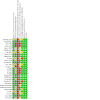
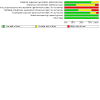



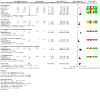




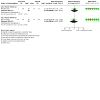










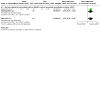
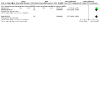

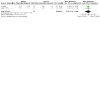



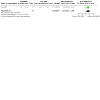

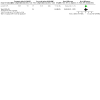
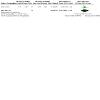



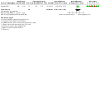




Update of
-
Orthodontic treatment for prominent lower front teeth (Class III malocclusion) in children.Cochrane Database Syst Rev. 2013 Sep 30;(9):CD003451. doi: 10.1002/14651858.CD003451.pub2. Cochrane Database Syst Rev. 2013. Update in: Cochrane Database Syst Rev. 2024 Apr 10;4:CD003451. doi: 10.1002/14651858.CD003451.pub3. PMID: 24085611 Updated.
References
References to studies included in this review
Abdelnaby 2010 {published data only}
Alzabibi 2021 {published data only}
-
- Alzabibi BA, Burhan AS, Hajeer MY, Nawaya FR. Short-term effects of the orthodontic removable traction appliance in the treatment of skeletal Class III malocclusion: a randomized controlled trial. Dental and Medical Problems 2021;58(2):163-72. - PubMed
Arun 1994 {published data only}
-
- Arun 2012 [pers comm]. Details unavailable. Personal communication.
-
- Arun T, Erverdi N. A cephalometric comparison of mandibular headgear and chin-cap appliances in orthodontic and orthopaedic view points. Journal of Marmara University Dental Faculty 1994;2(1):392-8. - PubMed
Atalay 2010 {published data only}
-
- Atalay Z, Tortop T. Dentofacial effects of a modified tandem traction bow appliance. European Journal of Orthodontics 2010;32(6):655-61. - PubMed
-
- Atalay [pers comm]. Details unavailable. Personal communication.
Canturk 2015 {published data only}
Celikoglu 2015 {published data only}
Chen 2012 {published data only}
-
- Chen X, Xie X. The effect of two different methods of rapid maxillary expansion on treatment results of skeletal Class III malocclusion patients with maxillary protraction in early permanent dentition. Shanghai Journal of Stomatology 2012;21(5):580-3. [PMID: ] - PubMed
Elnagar 2016 {published data only}
-
- Elnagar MHS. Re: "Comparative evaluation of 2 skeletally anchored maxillary protraction protocols" [personal correspondence]. Email to: D Owens 22 December 2020. - PubMed
Galeotti 2021 {published data only}
-
- Galeotti A, Martina S, Viarani V, Franchi L, Rongo R, D’Antò V, et al. Cephalometric effects of Pushing Splints 3 compared with rapid maxillary expansion and facemask therapy in Class III malocclusion children: a randomized controlled trial. European Journal of Orthodontics 2021;8(43):274-82. - PMC - PubMed
Ge 2012 {published data only}
Husson 2016 {published data only}
-
- Husson AH, Burhan AS, Salma FB, Nawaya FR. Dentoskeletal effects of the modified tandem appliance versus the facemask appliance in the treatment of skeletal class III malocclusion: a single-centre, randomized controlled trial. Journal of Contemporary Dental Practice 2016;17(7):522-9. [DOI: 10.5005/jp-journals-10024-1883] - DOI - PubMed
-
- NCT02144324. Changes following the treatment of lower jaw protrusion using two appliances. clinicaltrials.gov/ct2/show/NCT02144324 (first received 22 May 2014).
Jamilian 2011 {published and unpublished data}
-
- Jamilian A. “Re: Jamilian 2011” [personal correspondence]. Email to: J Harrison 21 May 2021.
-
- Jamilian A, Haraji A, Showkatbakhsh R, Valaee N. The effects of miniscrew with Class III traction in growing patients with maxillary deficiency. International Journal of Orthodontics 2011;22(1):25-30. - PubMed
Keles 2002 {published data only}
-
- Keles A, Tokmak EC, Erverdi N, Nanda R. Effect of varying the force direction on maxillary orthopedic protraction. Angle Orthodontist 2002;72(5):387–96. - PubMed
Liang 2021 {published and unpublished data}
-
- Liang 2021 [pers comm]. Details unavailable. Personal communication.
-
- Liang S, Wang F, Chang Q, Bai Y. Three-dimensional comparative evaluation of customized bone-anchored vs tooth-borne maxillary protraction inpatients with skeletal Class III malocclusion. American Journal of Orthodontics and Orofacial Orthopedics 2021;160:374-84. - PubMed
Liu 2013 {published data only}
-
- Liu WT, Zhou YH. Effect of repetitive rapid palatal expansions and constrictions by double hinged expander in maxillary protraction cases. Journal of Peking University. Health Sciences 2013;45(1):69-76. - PubMed
Liu 2015 {published data only}
-
- Liu W, Song Y, Wang X, He D, Zhou Y. A cone-beam computed tomography evaluation of maxillary protraction with repetitive rapid palatal expansions and constrictions. Chinese Journal of Stomatology 2015;50(2):78-83. - PubMed
-
- Liu W, Zhou Y, Wang X, Liu D, Zhou S. Effect of maxillary protraction with alternating rapid palatal expansion and constriction vs expansion alone in maxillary retrusive patients: a single-center, randomized controlled trial. American Journal of Orthodontics and Dentofacial Orthopedics 2015;148:641-51. [DOI: 10.1016/j.ajodo.2015.04.038] - DOI - PubMed
Ma 2009 {published data only}
-
- Ma WS, Lu HY, Dong FS, Hu XY, Li XC. Effect of maxillary protraction with or without rapid palatal expansion in treating early skeletal Class III malocclusion. West China Journal of Stomatology 2009;27(2):178-82. - PubMed
Majanni 2016 {published data only}
-
- Hajeer MY. Re: "Evaluation of pain, discomfort and acceptance during the orthodontic treatment of Class III malocclusion" [personal correspondence]. Email to: D Owens 17 September 2020.
-
- Majanni AM, Hajeer MY. The removable mandibular retractor vs the bone anchored intermaxillary traction in the correction of skeletal class III malocclusion in children: a randomized controlled trial. Journal of Contemporary Dental Practice 2016;17(5):361-71. [DOI: 10.5005/jp-journals-10024-1856] - DOI - PubMed
-
- Majanni AMR, Hajeer MY, Khattab TZ, Burhan AS, Alkhouri I. Evaluation of pain, discomfort, and acceptance during the orthodontic treatment of Class III malocclusion using bone-anchored intermaxillary traction versus the removable mandibular retractor: a randomised controlled trial. Journal of Clinical and Diagnostic Research 2020;14(3):18-23. [DOI: 10.7860/JCDR/2020/43577.13580] - DOI
Mandall 2010 {published data only}
-
- Mandall N, Cousley R, DiBiase A, Dyer F, Littlewood S, Mattick R, et al. Early class III protraction facemask treatment reduces the need for orthognathic surgery: a multi-centre, two-arm parallel randomized, controlled trial. Journal of Orthodontics 2016;43(3):164-75. [DOI: 10.1080/14653125.2016.1201302] - DOI - PMC - PubMed
-
- Mandall N, Cousley R, DiBiase A, Dyer F, Littlewood S, Mattick R, et al. Is early class III protraction facemask treatment effective? A multicentre, randomized, controlled trial: 15-month follow-up. Journal of Orthodontics 2010;37(3):149-61. - PubMed
-
- Mandall NA, Cousley R, DiBiase A, Dyer F, Littlewood S, Mattick R, et al. Is early class III protraction facemask treatment effective? A multicentre, randomized, controlled trial: 3-year follow-up. Journal of Orthodontics 2012;39(3):176-85. - PubMed
Minase 2019 {published data only}
Miranda 2021 {published and unpublished data}
-
- Miranda F, Bastos JCDC, Dos Santos AM, Janson G, Pereira Lauris JR, Garibe D. Dentoskeletal comparison of miniscrew-anchored maxillary protraction with hybrid and conventional hyrax expanders: a randomized clinical trial. American Journal of Orthodontics and Dentofacial Orthopedics 2021;160:774-83. [DOI: doi.org/10.1016/j.ajodo.2021.02.017 774] - PubMed
Seiryu 2020 {published and unpublished data}
-
- Seiryu M, Ida H, Mayama A, Sasaki S, Sasaki S, Deguchi T, et al. A comparative assessment of orthodontic treatment outcomes of mild skeletal Class III malocclusion between facemask and facemask in combination with a miniscrew for anchorage in growing patients: a single-center, prospective randomized controlled trial. Angle Orthodontist 2020;90(1):3-12. [DOI: 10.2319/101718-750.1] - DOI - PMC - PubMed
-
- Takano-Yamaoto T. RE: "A comparative assessment of orthodontic treatment outcomes of mild skeletal Class III malocclusion between facemask and facemask in combination with a miniscrew for anchorage in growing patients: A single-center, prospective randomized controlled trial” [personal correspondence]. Email to: D Owens 8 July 2020. - PMC - PubMed
Showkatbakhsh 2012 {published data only}
-
- Showkatbakhsh R, Jamilian A, Ghassemi M, Ghassemi A, Taban T, Imani Z. The effects of facemask and reverse chin cup on maxillary deficient patients. Journal of Orthodontics 2012;39:95-101. - PubMed
Showkatbakhsh 2013 {published data only}
-
- Showkatbakhsh R, Jamilian A, Behnaz M, Ghassemi M, Ghassemi A. The short-term effects of face mask and fixed tongue appliance on maxillary deficiency in growing patients--a randomized clinical trial. International Journal of Orthodontics 2015;26(1):33-8. - PubMed
-
- Showkatbakhsh R, Jamilian A, Taban T, Golrokh M. The effects of face mask and tongue appliance on maxillary deficiency in growing patients: a randomized clinical trial. Progress in Orthodontics 2012;13:266-72. - PubMed
-
- Showkatbakhsh R, Toumarian L, Jamilian A, Sheibaninia A, Mirkarimi M, Taban T. The effects of face mask and tongue plate on maxillary deficiency in growing patients: a randomized clinical trial. Journal of Orthodontics 2013;40(2):130-6. - PubMed
Vaughn 2005 {published data only}
-
- Vaughn GA, Mason B, Moon HB, Turley PK. The effects of maxillary protraction therapy with or without rapid palatal expansion: a prospective, randomized clinical trial. American Journal of Orthodontics and Dentofacial Orthopedics 2005;128(3):299-309. - PubMed
Xu 2001 {published data only}
-
- Xu B, Lin J. The orthopedic treatment of skeletal class III malocclusion with maxillary protraction therapy. Chinese Journal of Stomatology 2001;36(6):401-3. - PubMed
Yao 2015 {published data only}
-
- Yao N, Lin W, Yogjia G, Bin Z, Wenqian X, Meiqin G. A comparative study on maxillary protraction therapy with two different methods of rapid palatal expansion. Chinese Journal of Stomatology 2015;35(9):767-9.
Yavan 2023 {published and unpublished data}
Zhang 2018 {published data only}
-
- Zhang F, Li Y, Guo L. Efficacy of maxillary protraction correction in angle class III patients. International Journal of Clinical and Experimental Medicine 2018;11(8):8438-45.
References to studies excluded from this review
Akhoundi 2009 {published data only}
-
- Akhoundi MS, Khorshidian A, Kharrazi-Fard MJ. Comparison of face mask treatment with or without expansion screw in dentoskeletal changes of Class III patients. Journal of Islamic Dental Association of Iran 2009;21(3):186-93.
Altug 1989 {published data only}
-
- Altuğ Z, Erdem D, Rübendüz M. Investigation of the effect of functional treatment in skeletal Class III cases on the profile facial esthetics. Turkish Journal of Orthodontics 1989;3(1):39-44. - PubMed
Arman 2004 {published data only}
-
- Arman AA, Toygar TU, Abuhijleh E. Profile changes associated with different orthopedic treatment approaches in Class III malocclusions. Angle Orthodontist 2004;74(6):733-40. - PubMed
Arman 2006 {published data only}
-
- Arman A, Toygar TU, Abuhijleh E. Evaluation of maxillary protraction and fixed appliance therapy in Class III patients. European Journal of Orthodontics 2006;28(4):383-92. - PubMed
Baik 1995 {published data only}
-
- Baik HS. Clinical results of the maxillary protraction in Korean children. American Journal of Orthodontics and Dentofacial Orthopedics 1995;108(6):583-92. - PubMed
Barrett 2010 {published data only}
-
- Barrett AAF, Baccetti T, McNamara Jr JA. Treatment effects of the light-force chincup. American Journal of Orthodontics and Dentofacial Orthopedics 2010;138(4):468-76. - PubMed
Bavbek 2014 {published data only}
-
- Bavbek N, Tuncer B, Tortop T. Soft tissue alterations following protraction approaches with and without rapid maxillary expansion. Journal of Clinical Pediatric Dentistry 2014;38(3):277-83. - PubMed
Biren 1993 {published data only}
-
- Biren S, Erverdi N. Cephalometric evaluation of maxillary retrognathism cases treated with FR-3 appliance. Journal of Marmara Univerisity Dental Faculty 1993;1(4):354-60. - PubMed
Bozkaya 2017 {published data only}
Celebi 2020 {published data only}
Celikoglu 2014 {published data only}
Celikoglu 2017 {published data only}
-
- Celikoglu M, Buyukcavus MH. Changes in pharyngeal airway dimensions and hyoid bone position after maxillary protraction with different alternate rapid maxillary expansion and construction protocols: a prospective clinical study. Angle Orthodontist 2017;87(4):519-25. [DOI: 10.2319/082316-632.1] - DOI - PMC - PubMed
Cha 2011 {published data only}
-
- Cha BK, Ngan PW. Skeletal anchorage for orthopedic correction of growing Class III patients. Seminars in Orthodontics 2011;17(2):124-37. [DOI: ]
Chen 2011 {published data only}
Cozza 2004 {published data only}
-
- Cozza P, Marino A, Mucedero M. An orthopaedic approach to the treatment of Class III malocclusions in the early mixed dentition. European Journal of Orthodontics 2004;26(2):191-9. - PubMed
El 2010 {published data only}
-
- El H, Ciger S. Effects of 2 types of facemasks on condylar position. American Journal of Orthodontics and Dentofacial Orthopedics 2010;137(6):801-8. - PubMed
Erdur 2020 {published data only}
Franchi 2014 {published data only}
-
- Franchi L, Pavoni C, Cerroni S, Cozza P. Thin-plate spline analysis of mandibular morphological changes induced by early class III treatment: a long-term evaluation. European Journal of Orthodontics 2014;36(4):425-30. - PubMed
Gokalp 2010 {published data only}
-
- Gokalp H, Guney V, Kurt G. Late growth period orthopedic therapy versus bimaxillary surgery for correction of skeletal Class III. Journal of Craniofacial Surgery 2010;21(3):741-7. - PubMed
Goyenc 2004 {published data only}
-
- Goyenc Y, Ersoy S. The effect of a modified reverse headgear force applied with a facebow on the dentofacial structures. European Journal of Orthodontics 2004;26(1):51-7. - PubMed
Halicioglu 2014 {published data only}
He 2013 {published data only}
Hino 2014 {published data only}
-
- Hino CT, Cevidanes LHS, Nguyen TT, Clerck HJ, Franchi L, McNamara Jr JA. Three-dimensional analysis of maxillary changes associated with facemask and rapid maxillary expansion compared with bone anchored maxillary protraction. American Journal of Orthodontics and Dentofacial Orthopedics 2014;144(5):705-14. - PMC - PubMed
Ierardo 2018 {published data only}
Isci 2010 {published data only}
-
- Isci D, Turk T, Elekdag-Turk S. Activation–deactivation rapid palatal expansion and reverse headgear in Class III cases. European Journal of Orthodontics 2010;32(6):706-15. - PubMed
Kaygisiz 2022 {published data only}
Kilicoglu 1998 {published data only}
Kurt 2011 {published data only}
-
- Kurt H, Alioglu C, Karayazgan B, Tuncer N, Kilicoglu H. The effects of two methods of Class III malocclusion treatment on temporomandibular disorders. European Journal of Orthodontics 2011;33(6):636-41. - PubMed
Lee 2012 {published data only}
Lee 2019 {published data only}
Loca‐Apichai 2022 {published data only}
-
- Loca-Apichai P, Jein-Wein Liou E. Redirecting mandibular growth through orthodontic dentoalveolar height development in growing patients with Class III malocclusion undergoing maxillary orthopedic protraction. American Journal of Orthodontics and Dentofacial Orthopedics 2022;162(4):510-9. [DOI: 10.1016/j.ajodo.2021.05.013] [PMID: ] - DOI - PubMed
Lucchi 2022 {published data only}
Miamoto 2017 {published data only}
Mucedero 2007 {published data only}
-
- Mucedero M, Baccetti T, Franchi L, Cozza P. Effects of maxillary protraction with or without expansion on the sagittal pharyngeal dimensions in Class III subjects. American Journal of Orthodontics and Dentofacial Orthopedics 2007;135(6):777-81. - PubMed
Papageorgiou 2016 {published data only}
Pavoni 2009 {published data only}
-
- Pavoni C, Mucedero M, Baccetti T, Franchi L, Polimeni A, Cozza P. The effects of facial mask/bite block therapy with or without rapid palatal expansion. Progress in Orthodontics 2009;10(1):20-8. - PubMed
Pilehvar 2021 {published data only}en.irct.ir/trial/38226
-
- IRCT20190311043006N1. Introducing a new removable orthodontic appliance and its effect on dental arch dimentions in patient who need proclination in anterior teeth. www.irct.ir/trial/38226 (first received 24 April 2019).
Saleh 2013 {published data only}
-
- Saleh M, Hajeer MY, Al-Jundi A. Assessment of pain and discomfort during early orthodontic treatment of skeletal Class III malocclusion using the removable mandibular retractor appliance. European Journal of Paediatric Dentistry 2013;14:119-24. - PubMed
-
- Saleh M, Hajeer MY, Al-Jundi A. Short-term soft- and hard-tissue changes following Class III treatment using a removable mandibular retractor: a randomized controlled trial. Orthodontics and Craniofacial Research 2013;16:75-86. - PubMed
Sar 2011 {published data only}
-
- Sar C, Arman-Ozcirpici A, Uckan S, Yazici AC. Comparative evaluation of maxillary protraction with or without skeletal anchorage. American Journal of Orthodontics and Dentofacial Orthopedics 2011;139(5):636-49. - PubMed
Sar 2014 {published data only}
-
- Sar C, Sahinoglu Z, Ozcirpici AA, Uckan S. Dentofacial effects of skeletal anchored treatment modalities for the correction of maxillary retrognathia. American Journal of Orthodontics and Dentofacial Orthopedics 2014;145(1):41-54. - PubMed
Solano‐Mendoza 2012 {published data only}
-
- Solano-Mendoza B, Inglesias-Linares A, Yanez-Vico RM, Mendoza-Mendoza A, Alio-Sanz JJ, Solano-Reina E. Maxillary protraction at early ages. The revolution of new bone anchorage appliances. Journal of Clinical Pediatric Dentistry 2012;37:219-29. - PubMed
Tortop 2007 {published data only}
-
- Tortop T, Keykubat A, Yuksela S. Facemask therapy with and without expansion. American Journal of Orthodontics and Dentofacial Orthopedics 2007;132(4):467-74. - PubMed
Tortop 2014 {published data only}
Ucem 2004 {published data only}
-
- Ucem TT, Ucuncu N, Yüksel S. Comparison of double-plate appliance and facemask therapy in treating Class III malocclusions. American Journal of Orthodontics and Dentofacial Orthopedics 2004;126(6):672-9. - PubMed
Ulgen 1994 {published data only}
-
- Ulgen M, Firatli S. The effects of the Frankel's function regulator on the Class III malocclusion. American Journal of Orthodontics and Dentofacial Orthopedics 1994;105(6):561-7. - PubMed
Wang 2018 {published data only}
-
- Wang Y, Zhou Y, Wang X, Liu W. Evaluation of maxillary three-dimensional changes in maxillary protraction with alternating rapid palatal expansion and constriction based on the cone-beam computed tomography. Journal of Peking University (Health Sciences) 2018;50(4):685-93. [DOI: 10.3969 /j.issn.1671-167X.2018.04.020] - PubMed
Wiedel 2014 {published data only}
Wilmes 2009 {published data only}
-
- Wilmes B, Olthoff G, Drescher D. Comparison of skeletal and conventional anchorage methods in conjunction with pre-operative decompensation of a skeletal Class III malocclusion. Journal of Orofacial Orthopedics 2009;70(4):297-305. - PubMed
Yagci 2010 {published data only}
-
- Yagci A, Uysal T. Effect of modified and conventional facemask therapy on condylar position in Class III patients. Orthodontics and Craniofacial Research 2010;13(4):246-54. - PubMed
Yagci 2011 {published data only}
-
- Yagci A, Uysal T, Usumez S, Orhan M. Effects of modified and conventional facemask therapies with expansion on dynamic measurement of natural head position in Class III patients. American Journal of Orthodontics and Dentofacial Orthopedics 2011;140(5):e223-31. - PubMed
Zaidao 2017 {published data only}
-
- Zaidao X, Jie K, Guizhi Z, Qinghua L, Xingming Y, Yihan X. The effect of maxillary protraction therapy on skeletal class III malocclusion with two different methods of rapid maxillary expansion. Chinese Journal of Stomatology 2017;11(3):169-73.
Zere 2018 {published data only}
Zhang 2008 {published data only}
-
- Zhang H, Liu J, Fan XF, Zhao Q, Zhang JH, Zhao ZH. Modified retention elements of removable reverse headgear appliances. West China Journal of Stomatology 2008;26(3):306-7. - PubMed
References to studies awaiting assessment
Liu 2022 {published data only}
-
- ChiCTR2000034909. Effect of maxillary protraction with alternate rapid maxillary expansions and constrictions in maxillary retrusive patients: a randomized controlled trial. www.chictr.org.cn/showprojEN.html?proj=56648 (first received 24 July 2020). [PMID: ]
-
- Liu WT, Wang YR, Wang XD, Zhou YH. [A cone-beam computed tomography evaluation of three-dimensional changes of circummaxillary sutures following maxillary protraction with alternate rapid palatal expansions and constrictions]. Journal of Peking University (Health Sciences) 2022;54(2):346-55. [DOI: 10.19723/j.issn.1671-167X.2022.02.024] [PMID: ] - DOI - PMC - PubMed
References to ongoing studies
ACTRN12622000310763 {published data only}44620
-
- ACTRN12622000310763. Evaluation of two types of treatment for adolescent patients with protrusion of lower jaw and constriction of upper jaw. anzctr.org.au/ACTRN12622000310763.aspx (first received 18 March 2021).
ISRCTN12197405 {published data only}www.who.int/trialsearch/Trial2.aspx?TrialID=ISRCTN12197405
-
- ISRCTN12197405. An investigation of treating patients with conventional and skeletal anchored protraction headgear. www.isrctn.com/ISRCTN12197405 (first received 2 April 2020).
ISRCTN93900866 {published data only}16053293900866
-
- ISRCTN93900866. A clinical trial to assess the effectiveness of miniplate surgical treatment to bring the upper jaw forwards in 11-14 years old children. www.isrctn.com/ISRCTN93900866 (first received 19 September 2014).
NCT02711111 {published data only}
-
- NCT02711111. Effect of bone-anchored protraction on maxillary growth in the young child. clinicaltrials.gov/ct2/show/NCT02711111 (first received 17 March 2016). [CLINICALTRIALS.GOV: NCT02711111]
NCT03354442 {published data only}
-
- NCT03354442. Treatment of Class III malocclusion using modified fixed mandibular retractor appliance. clinicaltrials.gov/ct2/show/NCT03354442 (first received 28 November 2017).
NCT04310267 {published data only}
-
- NCT04310267. Three levels of force application for maxillary protraction (MaxiProtr). clinicaltrials.gov/ct2/show/NCT04310267 (first received 17 March 2020).
NCT04387175 {published data only}
-
- NCT0438715. Intraoral device vs facial mask for Class III treatment. clinicaltrials.gov/ct2/show/NCT04387175 (first received 13 May 2020).
NCT04825951 {published data only}
-
- NCT04825951. Dentofacial effects of two non-compliance appliances In the treatment of growing skeletal Class III patients. clinicaltrials.gov/ct2/show/NCT04825951 (first received 1 April 2021).
NCT04863404 {published data only}
-
- NCT4863404. Evaluation of the treatment effects of tooth borne versus bone-anchored protraction procedures in Class III patients with maxillary deficiency. clinicaltrials.gov/ct2/show/NCT04863404 (first received 28 April 2021).
NCT04911400 {published data only}
-
- NCT04911400. Effects of Class III elastics on stability of orthopaedic Class III correction. clinicaltrials.gov/ct2/show/NCT04911400 (first received 3 June 2021).
NCT05089396 {published data only}
-
- NCT05089396. Effects of conventional versus skeletally anchored facemask in treatment of the prepubertal skeletal Class III patients. clinicaltrials.gov/ct2/show/NCT05089396 (first received 22 October 2021).
NCT05345756 {published data only}44683
-
- NCT05345756. Intraoral maxillary protraction technique vs facemask using Alt-RAMEC protocol for treatment Class III growing patients (ALT-RAMEC). clinicaltrials.gov/ct2/show/NCT05345756 (first received 26 April 2022).
NCT05475548 {published data only}44771
-
- NCT05475548. Effect of skeletally anchored reversed PowerScope appliance in orthodontic treatment of patients with Class III malocclusion. clinicaltrials.gov/ct2/show/NCT05475548 (first received 27 July 2023).
Additional references
Alhammadi 2018
Almuzian 2018
-
- Almuzian M, McConnella E, Darendeliler MA, Alharbic F, Mohammed H. The effectiveness of alternating rapid maxillary expansion and constriction combined with maxillary protraction in the treatment of patients with a class III malocclusion: a systematic review and meta-analysis. Journal of Orthodontics 2018;45(4):250-9. - PubMed
Arqub 2021
Chatzoudi 2014
Clemente 2018
Cordasco 2014
-
- Cordasco G, Matarese G, Rustico L, Fastuca S, Caprioglio A, Lindauer SJ, Nucera R. Efficacy of orthopedic treatment with protraction facemask on skeletal Class III malocclusion: a systematic review and meta-analysis. Orthodontics and Craniofacial Research 2014;17(3):133-43. [DOI: 10.1111/ocr.12040.] - DOI - PubMed
Cornelis 2021
-
- Cornelis MA, Tepedino M, Riis NdV, Niu X, Cattaneo PM. Treatment effect of bone-anchored maxillary protraction in growing patients compared to controls: a systematic review with meta-analysis. European Journal of Orthodontics 2021;43(1):51-68. - PubMed
De Clerck 2010
Easterbrook 1991
-
- Easterbrook PJ, Berlin JA, Gopalan R, Matthews DR. Publication bias in clinical research. Lancet 1991;337(8746):867-72. - PubMed
El‐Mangoury 1990
-
- El-Mangoury NH, Mostafa YA. Epidemiologic panorama of dental occlusion. Angle Orthodontist 1990;60(3):207-13. - PubMed
Farhadian 2019
-
- Farhadian N, Soheilifar S, Abolvardi M, Miresmailei A, Mohammadi Y. Effects of facemasks versus intraoral appliances in treating maxillary deficiency in growing patients: a systematic review and meta-analysis. Dental and Medical Problems 2019;56(4):401-10. - PubMed
Foersch 2015
Higgins 2011
-
- Higgins JPT, Green S (editors). Cochrane Handbook for Systematic Reviews of Interventions Version 5.1.0 (updated March 2011). The Cochrane Collaboration, 2011. Available from www.cochrane-handbook.org.
Hu 2022
Huang 2018
Hui 2020
Jamilian 2016
-
- Jamilian A, Cannavale R, Piancino MG, Eslami S, Perillo L. Methodological quality and outcome of systematic reviews reporting on orthopaedic treatment for class III malocclusion: overview of systematic reviews. Journal of Orthodontics 2016;43(2):102-20. [DOI: 10.1080/14653125.2016.1155334] - DOI - PubMed
Jamilian 2011a
-
- Jamilian A, Haraji A, Showkatbakhsh R, Valaee N. The effects of miniscrew with Class III traction in growing patients with maxillary deficiency. International Journal of Orthododontics (Milwaukee, WI) 2011;22(2):25-30. - PubMed
Jiménez‐Silva 2018
-
- Jiménez-Silva A, Carnevali-Arellano R, Venegas-Aguilera M, Tobar-Reyes J, Palomino-Montenegro H. Temporomandibular disorders in growing patients after treatment of class II and III malocclusion with orthopaedic appliances: a systematic review. Acta Odontologica Scandinavica 2018;76(4):1-13. [DOI: 10.1080/00016357.2017.1416165] - DOI - PubMed
Kakali 2021
Lee 2021
Lefebvre 2022
-
- Lefebvre C, Glanville J, Briscoe S, Featherstone R, Littlewood A, Marshall C, et al. Technical Supplement to Chapter 4: Searching for and selecting studies. In: Higgins JPT, Thomas J, Chandler J, Cumpston MS, Li T, Page MJ, Welch VA (eds). Cochrane Handbook for Systematic Reviews of Interventions Version 6.3 (updated February 2022). Cochrane, 2022. Available from www.training.cochrane.org/handbook.
Lin 2018
Mandall 2000
-
- Mandall NA, McCord JF, Blinkhorn AS, Worthington HV, O'Brien KD. Perceived aesthetic impact of malocclusion and oral self perceptions in 14–15 year old Asian and Caucasian children in Greater Manchester. European Journal of Orthodontics 2000;22(2):175-83. - PubMed
Meyns 2018
-
- Meyns J, Brasil DM, Mazzi-Chaves JF, Politis C, Jacobs R. The clinical outcome of skeletal anchorage in interceptive treatment (in growing patients) for class III malocclusion. International Journal of Oral and Maxillofacial Surgery 2018;47(8):1003-10. - PubMed
Mohlin 1980
-
- Mohlin B, Ingervall B, Thilander B. Relation between malocclusion and mandibular dysfunction in Swedish men. European Journal of Orthodontics 1980;2(4):229-38. - PubMed
Morales‐Fernandez 2013
-
- Morales-Fernandez M, Iglesias-Linares A, Yanez-Vico RM, Mendoza-Mendoza A, Solano-Reina E. Bone- and dentoalveolar-anchored dentofacial orthopedics for Class III malocclusion: new approaches, similar objectives?: a systematic review. Angle Orthodontist 2013;83(3):540-52. [DOI: 10.2319/051312-392.1] - DOI - PMC - PubMed
Piers 2002
-
- Piers EV, Harris DB, Herzberg DS. Piers–Harris Children's Self-concept Scale (Piers–Harris 2). 2nd edition. Los Angeles: Western Psychological Services, 2002.
Proffit 1993
-
- Proffit WR, Fields HW Jr. Contemporary Orthodontics. 2nd edition. Vol. 2-16. St Louis, Missouri, USA: Mosby-Year Book, Inc, 1993. [ISBN 0-8016-6393-8]
RevMan 2012 [Computer program]
-
- Review Manager (RevMan). Version 5.2. Copenhagen: The Nordic Cochrane Centre, The Cochrane Collaboration, 2012.
RevMan Web 2023 [Computer program]
-
- Review Manager Web (RevMan Web). Version 7.2.0. The Cochrane Collaboration, 2023. Available at revman.cochrane.org.
Rongo 2017
Schünemann 2013
-
- Schünemann H, Brożek J, Guyatt G, Oxman A, editor(s). Handbook for grading the quality of evidence and the strength of recommendations using the GRADE approach (updated October 2013). GRADE Working Group, 2013. Available from gdt.guidelinedevelopment.org/app/handbook/handbook.html.
Shaw 1980
-
- Shaw WC, Addy M, Ray C. Dental and social effects of malocclusion and effectiveness of orthodontic treatment: a review. Community Dentistry and Oral Epidemiology 1980;8(1):36-45. - PubMed
Shaw 1991
-
- Shaw WC, Richmond S, O'Brien KD, Brook P, Stephens CD. Quality control in orthodontics: Indices of treatment need and treatment standards. British Dental Journal 1991;170(3):107-12. - PubMed
Silva 2001
-
- Silva RG, Kang DS. Prevalence of malocclusion among Latino adolescents. American Journal of Orthodontics and Dentofacial Orthopedics 2001;119(3):313-5. - PubMed
Tsichlaki 2020
-
- Tsichlaki A, O'Brien K, Benson PE, Marshman Z, Johal A, Colonio-Salazar FB, et al. Development of a core outcome set for use in routine orthodontic clinical trials. American Journal of Orthodontics and Dentofacial Orthopedics 2020;158(5):650-60. [DOI: 10.1016/j.ajodo.2020.05.010] [PMID: ] - DOI - PubMed
Wang 2022
-
- Wang J, Yang Y, Wang Y, Zhang L, Ji W, Hong Z, Zhang L. Clinical effectiveness of different types of bone-anchored maxillary protraction devices for skeletal Class III malocclusion: systematic review and network meta-analysis. Korean Journal of Orthodontics 2022;52(5):313-23. [DOI: 10.4041/kjod21.264] [PMID: ] - DOI - PMC - PubMed
Woon 2017
Wu 2020
-
- Wu Z, Zhang X, Li Z, Liu Y, Jin H, Chen Q, Guo J. A Bayesian network meta‐analysis of orthopaedic treatment in Class III malocclusion: maxillary protraction with skeletal anchorage or a rapid maxillary expander. Orthodontics and Craniofacial Research 2020;23(1):1-15. [DOI: 10.1111/ocr.12339] - DOI - PubMed
References to other published versions of this review
Publication types
MeSH terms
Associated data
LinkOut - more resources
Full Text Sources
Medical

